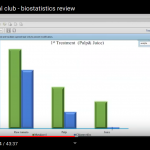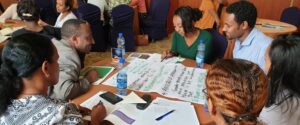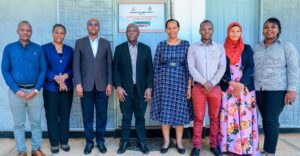
Good relationships are at the heart of good monitoring, evaluation and learning
Learning systematically about what works is fundamental to putting research and knowledge at the heart of development. Building local capacity to evaluate and learn from projects is an important part of our work. Reflecting on and learning from the evidence generated from monitoring and evaluating our work, with our partners, is a strong component of INASP’s approach to effective programme work. Over recent years we have extended this element of our work by working on monitoring, evaluation and learning (MEL) of other organizations’ projects and programmes.
Over the past two years we have worked with a number of organizations and projects in different ways. Our involvement in other projects has included discrete pieces of training in MEL; helping other organizations develop MEL approaches; supporting MEL activities being done by partners; and doing evaluations of projects. It has provided opportunities to be involved in projects that are not directly related to our work at INASP, including a couple of projects with more of a humanitarian focus than INASP’s, and the chance to work with organizations that are bigger or smaller than INASP.
Working with other organizations has provided an opportunity for us not only to share our MEL expertise but also to reflect on and learn from what makes a successful MEL project within INASP and beyond.
Mutual learning
Any partnership is a mutual learning process – and capacity development goes both ways. Through working with other organizations, we have been able to deepen our understanding of MEL within INASP. Obviously, it is essential to have the necessary tools, skills and experience to carry out the technical aspects of the work. However, a successful underpinning MEL component of a project involves more than tools. We have identified three of the key elements of good MEL (in no particular order):
- Having a contextual understanding of the project’s structure and goals and the tools best suited to it
- Understanding the organizational culture of the partner and project and how best to convey information – especially “negative” information
- Building relationships with partners
Understanding the project and organization
Contextual understanding is fundamental. This is about the overall situation of the project, both formal and informal. Often a theory of change and logframe are the most “mundane” bits of MEL. What is really interesting, and equally important, is the story that exists within the organization and understanding what factors could contribute to the change that the project wants to see.
Doing MEL in an external capacity means you are connected to the wider project and organization to both a greater and lesser extent. As an external partner, you have less of an overarching view of the nuances that help shape a piece of work. On the other hand, an external partner can provide a fresh perspective and ask the challenging questions that can be difficult for long-term members of a team to ask from within a project. Organizations are at different points in their readiness to take on board the challenging questions; it is the evaluator’s or MEL specialist’s role to facilitate this and make the information more digestible.
For this reason, it is also important to understand the organizational culture within the project and within the wider organization that is undertaking the project. The “right” organizational culture is crucial for taking on board, for example, difficult findings that indicate little or even negative progress in achieving results. How an organization responds is crucial for whether it then uses that insight to refine their work going forward.
The importance of good relationships
To be effective, it is important to build trust and good working relationships with partners. Partnership has been a key theme for INASP throughout our existence and is one of our ‘core pillars’ in our current and future strategy. Everything is about relationships – good faith is crucial to being able to do a good job and ensuring that the outcomes actually benefit the people who both value and can use it.
It’s interesting that when people think of MEL, they think of theories of change, results frameworks, the “dreaded” logframe! But good MEL is all about relationship building. This is the hardest part of the process of generating, learning from and putting good evidence to use but it is clear from our work that prioritizing relationships underpins our capacity to deliver effectively and learn from our work.
The conversations you need to have – as you would in any meaningful relationship – are important. That cannot be overemphasized. The success of an evaluation and MEL in general depends on the openness to have those conversations and the willingness and commitment of all to learn from and use the evidence being generated. It also depends on knowing how to convey information – truthfully but also tactically – to maximize the chances of ownership.
We need to create space and relationships to share findings and have conversations about how things are going – both the challenges and successes.
At INASP, MEL is embedded into everything we do and we hope to continue to grow our opportunities to share learning within our sector of research and knowledge systems and more externally also – and to continue to deepen our reflections and understanding of our own programme MEL too.

 Previous Post
Previous Post Next Post
Next Post


